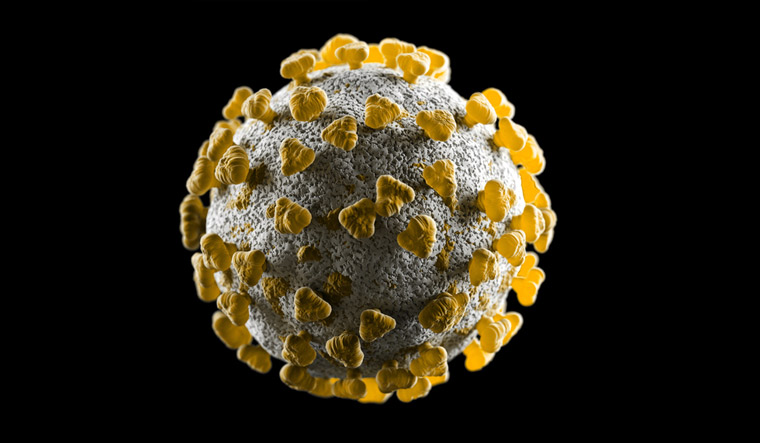COVID-19 infections fall into different patterns that are predictors of potential outcomes and can guide early treatment of those infected, according to a report 'Symptom Clusters in COVID-19', published in MedRxiv. This is not a peer-reviewed article, but its impact may be significant. The article points out that symptoms such as confusion, abdominal pain and shortness of breath are hallmarks of the most severe manifestations of the disease.
There are six categories of manifestation of the disease based on the first five days of symptoms; this could be used to predict treatment requirements very early. Five days of early symptom reporting produced stable symptom clusters that allow for the construction of a predictive system better than systems based on baseline health information, according to the report.
What does this mean? "These findings have important implications for care and monitoring of people who are most vulnerable to severe COVID-19," said Dr Claire Steves from King's College London where the study was conducted with data from UK, US, and Swedish patients. "If you can predict who these people are at day five, you have time to give them support and early interventions such as monitoring blood oxygen and sugar levels, and ensuring they are properly hydrated—simple care that could be given at home, preventing hospitalisation and saving lives."
“It was 13 days after the first symptoms that people come to the hospital requiring breathing support,” said Steves, noting that extra eight days of early warning represent a significant predictor as to the likelihood of need for more intensive care. After identifying the types of manifestations, the researchers managed to create a model that predicts the probability that patients require hospital treatment and respiratory assistance.
Early COVID-19 symptoms cluster into six types, three of them severe, denoting the levels of seriousness of the infection and the likelihood that the patient will need oxygen or ventilator intubation if hospitalised. By day 5 of COVID-19 the cluster in which a participant falls can be predicted with 72 per cent precision, says the report. These clusters are:
COVID-19, Type 1. — Mild. Likelihood of respiratory assistance, 1.5 per cent. —"Flu-like" without fever: Headache, loss of smell, muscle pains, cough, sore throat, chest pain, no fever.
COVID-19, Type 2. —Mild. Likelihood of respiratory assistance, 4.4 per cent. —"Flu-like" with fever: Headache, loss of smell, cough, sore throat, hoarseness, fever, loss of appetite.
COVID-19, Type 3. —Mild. Gastrointestinal. Likelihood of respiratory assistance, 3.7 per cent. —Headache, loss of smell, loss of appetite, diarrhea, sore throat, chest pain, no cough.
COVID-19, Type 4. —Severe Level One: Fatigue. Likelihood of respiratory assistance, 8.6 per cent. —Marked by the early presence of severe fatigue and the continuous presence of chest pain and persistent cough. Headache, loss of smell, cough, fever, hoarseness, chest pain, fatigue.
COVID-19, Type 5. —Severe Level Two, Confusion. Significant risk of hospitalization. Likelihood of respiratory assistance, 9.9 per cent. — Marked by reported confusion, skipped meals and severe fatigue Headache, loss of smell, loss of appetite, cough, fever, hoarseness, sore throat, chest pain, fatigue, confusion, muscle pain.
COVID-19, Type 6. —Severe Level Three, Abdominal and Respiratory. Significant risk of hospitalization. Likelihood of respiratory assistance, 19.8 per cent. — Reporting more marked symptoms of respiratory distress including early onset of shortness of breath accompanied by chest pain, combined with significant abdominal pain, diarrhea and confusion when compared with other clusters, including headache, loss of smell, loss of appetite, cough, fever, hoarseness, sore throat, fatigue, and muscle pain.
“At five days, it appeared that headache was the symptom most consistently reported across all clusters, while severe fatigue appeared in those clusters with increased risk of requiring medical support. The duration of confusion was longer in more severe clusters while loss of smell or taste was reported over a longer duration in milder clusters,” says the report.
People with types 4, 5, or 6 manifestations tended to be older and more frail, and more likely to be overweight and prone to pre-existing conditions, such as diabetes or lung disease, compared to those with types 1, 2, or 3.
Researchers noted that some symptoms such as confusion, abdominal pain and shortness of breath, which are not widely known as coronavirus symptoms, are hallmarks of the most severe forms of the disease.
"This approach is helping us understand the unfolding story of this disease in each patient so they can get the best care,” said Dr Carole Sudre, also a lead researcher of the study at King’s College. ”Our study illustrates the importance of monitoring symptoms over time to make our predictions about individual risk and outcomes more sophisticated and accurate.”
The study was limited by the use of self-reported information collected from individuals who used a smartphone app. However, these findings have important implications for the care and monitoring of people who are most vulnerable to severe COVID-19, said Steves. “Being able to gather big datasets through the app and apply machine learning to them is having a profound impact on our understanding of the extent and impact of COVID-19, and human health more widely,” added Sebastien Ourselin, professor of healthcare engineering at King’s College and senior author of the study.
“The ability to predict medical resource requirements days before they arise has significant clinical utility in this pandemic. If widely utilised, healthcare providers and managers could track large groups of patients and predict 15 numbers requiring hospital care and respiratory support days ahead of these needs arising, allowing for staff, bed and intensive care planning,” concludes the report.



